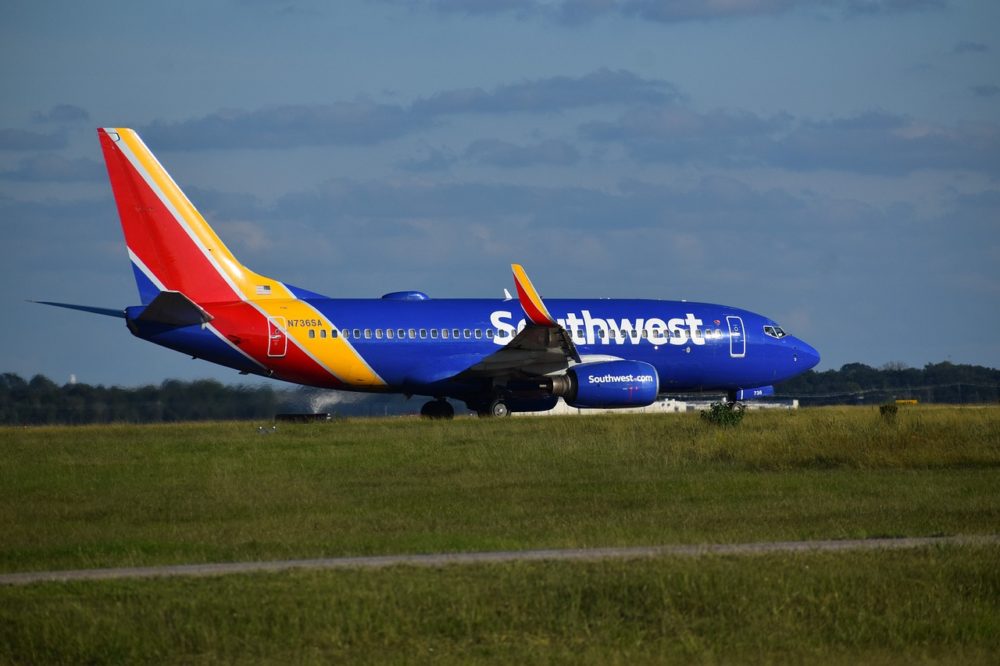
Summary
- The 2019 FAA forecast calls for U.S. carrier domestic passenger growth over the next 20 years to average 1.8 percent per year.
- FY 2018 was Southwest’s 46th consecutive year of profitability.
- FY 2018 return on invested capital was 18.4% (after tax), well in excess of Southwest’s weighted average cost of capital.
- Since 2010, outstanding share count reduced by ~26%.
Company Overview
Southwest Airlines provides scheduled air transportation in the United States and near-international markets. Southwest airlines was started by Herb Kelleher and Rollin Kings in March of 1967. During the first 4 years of incorporation, Southwest was embroiled in a lawsuit which it eventually won in 1970. The lawsuit was brought by existing Airline operators because they were scared of Southwest’s business model. Southwest commenced service on June 18, 1971 with three Boeing 737 aircrafts serving three Texas cities: Dallas, Houston and San Antonio.
As of December 31, 2018, Southwest operated a total of 750 Boeing 737 aircrafts and served 99 destinations in 40 states, the District of Columbia, the commonwealth of Puerto Rico, and ten near-international countries: Mexico, Jamaica, The Bahamas, Aruba, Dominican Republic, Costa Rica, Belize, Cuba, the Cayman Islands, and Turks and Caicos.
In Q1 of 2019, Southwest commenced service to Hawaii from California. The company announced plans to serve Honolulu International Airport, Lihue Airport, Kona International Airport at Keahole, and Kahului Airport from initial California cities: Oakland, San Diego, San Jose, and Sacramento.
Company Operations
Low cost and superior customer satisfaction are the heart and soul of operations at Southwest. Southwest differentiates itself from the competition by:
- Point-to-point service
- Approximately 77% of the company’s customers flew nonstop during 2018
- It enables it to provide its markets with frequent, conveniently timed flights and low fares.
- By providing point-to-point service, Southwest can prepare routes to and from many secondary or downtown airports. These conveniently located airports are typically less congested than other airlines’ hub airports, which contributes to Southwest’s ability to achieve high asset utilization because aircraft can be scheduled to minimize the amount of time they are on the ground.
- Use of Single aircraft type – Boeing 737
- Southwest’s use of single aircraft type allows for simplified scheduling, maintenance, flight operations, and training activities.
- Marketing and Customer Service
- Southwest offers relatively simple fee structure that features competitive fares and product benefits:
- Unrestricted fares and lower fares available on a restricted basis
- Two free checked bags and complimentary soft drinks & snacks
- No fees for changes to flight reservations although fare differences may apply
- Exemplary guest services resulting in high customer satisfaction
- Southwest offers relatively simple fee structure that features competitive fares and product benefits:
In the United States, Southwest is the only airline that allows two checked bags at no additional charge.
Financial Analysis
For conducting the financial analysis, I used the balance sheet from 2018 annual report as the basis. Below is the explanation of some of the key terms and assumptions:
- Air traffic liability – Southwest’s primary revenue comes from tickets sold, which are initially deferred as Air traffic liability. Passenger revenue associated with the tickets is recognized when the performance obligation to the Customer is satisfied, which is primarily when the travel is provided. It is carried on the Balance sheet under both current and long term liabilities (depending on when the travel is scheduled).
- Net Assets = Assets – Liabilities + Air traffic liability. As of December 31, 2018, Southwest had $14.86 billion of net assets. This includes Goodwill of $970 million (from 2011 acquisition of AirTran Holdings, Inc.) and other assets of $720 million (this includes investments greater than 12 months).
- Free cash flow = Net cash from operations – Capital expenditure – Assets constructed for others + reimbursements for assets constructed for others. For FY 2018 Southwest generated $3.1 billion in free cash flow and Net Income of $2.47 billion.
I have added back Air traffic liability to the net assets because the company will recognize this as revenue in the near future. Majority of the seats booked are non-refundable, which increases my confidence in adopting this measure to calculate net assets.
Discounted Cash Flow (DCF) Method
I have used the DCF method for calculating the present value of next 10 years free cash flow. Below are the key assumptions:
- Discount rate – 3% – 62 basis point higher than the 10-year US treasury
- Enterprise value – $28 billion
- Shares Outstanding – 543.1 million
- Free cash flow per share – $5.71
I are presenting three scenarios:
- The worst case assumes 1.5% growth for the first 4 years followed by a drop of 10%. Then it resumes 1.5% growth for the next 3 years followed by a 5% drop and a flat last year.
- Normal case scenario assumes 1.5% growth for the next 10 years.
- The best case scenario assumes 2.5% growth for the next 10 years.
These three scenarios are created arbitrarily, however, in my opinion represent a conservative growth rate when compared to historical averages. Also, according to FAA Aerospace Forecast 2019-2039 passenger traffic over the next 20 years is projected to grow at an average of 1.8% annually.

As illustrated in the chart above, even the worst case scenario projects a significant upside from the current share price. I will like to point out that the assumptions in this model are highly conservative. I have arrived at the share price at the end of 10 years assuming no share repurchase. This is a highly unlikely scenario. Over the years, Southwest has been consistently buying back its shares. Since 2010, its outstanding share count have been reduced by ~26%. In 2018, they repurchased shares worth $2 billion dollars. It has a dividend yield of 1.38%. Also, I have applied a conservative multiple of 9 times free cash flow to arrive at the residual value.
Another way to think about Southwest’s valuation is to look at the enterprise value. If you buy entire Southwest, you can buy it for ~$28 billion. In return you will receive ~$15 billion of assets which are capable of producing $3 billion in free cash flow. Assuming no changes in operations we are looking at a payback period of little over 9 years (28/3) which in my opinion is very reasonable for a well run company like Southwest.
Like any investment idea, investment in Southwest is not without risks. Some risks that can have a major negative impact on profitability and its ability to generate substantial free cash flow include:
- Higher jet fuel prices – Jet fuel cost represent 2nd biggest cost item for the company.
- Economic slowdown – A slow down in the economy can impact the demand for air travel.
Please feel free to leave a me a comment if you have a question or a suggestion. Happy Investing!
Disclaimer: These are my personal views and are for educational purposes only. I am long Southwest (LUV). Please do your own research or talk to a financial advisor before making any investment decisions.
References:
-
- Southwest Airlines 2018 Annual Report
- FAA Aerospace Forecast 2019-39



